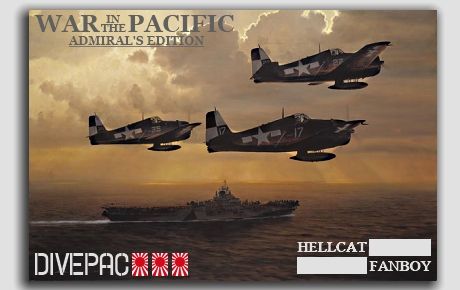Alfred
Posts: 6685
Joined: 9/28/2006
Status: offline

|
Gentlemen,
Recently I was contacted by a four year forumite veteran seeking clarification on how to determine how long a supply stockpile at a particular base might last. Apparently his requests from other players for similar information had not been as helpful as he had hoped.
It seems to me that other long term players, and of course in particular new players, might benefit from having all the relevant issues presented in a consolidated location. Before continuing two points need to be immediately identified. Firstly, what follows applies only to the official game scenarios. Some of the mods have altered important details. Secondly, readers who wish to see the impact of logistics on operations are well advised to read Andy Mac’s AAR. Probably more than any other AAR writer, Andy Mac regularly explains how his operations are shaped by logistical considerations. As he is a dev, his observations should not be overlooked by anyone who wishes to master this topic.
(A) Overview
The determination of how large a supply stockpile should be, or how long it might last, is not an exact science. There are too many variables outside of a player’s control for 100% predictive accuracy. What can be identified are the factors which impact upon supply stockpiles at a particular base. These factors can be broadly classified as falling within the following areas:
• Supply creation
• Supply movement
• Supply destruction
• Supply consumption
These areas are looked at in detail in the following sections. When the discussion touches on naval matters, fuel is included in the discussion. By necessity, this discussion is essentially a summary, for complete details of all the game scenario data and relationships, readers are directed back to the manual.
One very important point for players to be aware of is that the aggregated supply of all your supply stockpiles from all your bases is of no real value. To accomplish anything you need to have supply (and fuel) locally where it will be consumed. Ten million supply points located in San Francisco, Los Angeles and San Diego will not feed your forces fighting on Guadalcanal. Those forces will be fed solely out of what is stored locally on Guadalcanal.
(B) Mummy, where does supply come from?
There are three basic supply sources:
• National Automatic
• Imports
• Industrial Enterprises
The Burma Road is a unique supply source. Each turn that the Allied player can trace an uninterrupted supply path along the transportation network linking Rangoon and Tsuyung, 500 supply points are delivered to Tsuyung.
(B.1) National Automatic
Scenario designers can assign a daily amount of supply (and or fuel) which will automatically arrive each day at a base. This automatic delivery will cease immediately upon the capture of the base by the enemy. The deliveries will immediately resume when the base is liberated from the enemy.
The amount delivered daily is the figure to the right of the slash in the supplies on hand data found on the base screen (see manual page 205). There is nothing the player can do to increase or reduce this amount in game, other than of course to lose/capture the base.
(B.2) Imports
Some importation of supply to a base occurs automatically without any player action required. Players can manually attempt to import supply (and fuel). The opposing player can block the automatic importation, or attempt to interdict the imported supply.
Most automatic importation of supply (and fuel) occurs overland but under certain restricted circumstances, it can also occur over water (see s.9.3.3.3 of the manual). There is no aerial automatic importation of supply. Players can manually import, by ships both supply and fuel, but airplanes cannot transport fuel they can only transport supply. Players cannot manually directly import supply (and fuel) overland, however by manipulation of the supply required spinner or stockpile option, a player can manually exert some influence on the direction and amount of supply moved overland by the program automatically.
Supply will not move automatically overland through a hexside owned by the enemy nor through a contested hex.
How often supply will automatically move overland depends on the quality of the overland transportation links. The table in s.8.3.1 of the manual details the cost of moving supply through the different terrain types and transportation infrastructure.
Each overland transportation route has a value which is determined by subtracting from 100 the cost of movement associated with each hex along which the supply must travel. The value of the overland route then determines how often a delivery is made:
• Four times per week if the overland transportation route amounts to 89 - 100
• Two times per week if the route amounts to 49 – 88
• Once per week if the route amounts to 10 – 48
Bases will only export supply which is viewed as surplus. Supply in excess of 3x the amount required by the base is considered surplus. This surplus supply may go to another base or be consumed by LCUs in the field.
The amount of supply which can be delivered by a Transport plane or Level Bomber is (Maximum Load)/2000. Fractions are rounded down but each plane can always deliver a minimum of 1 supply point.
(B.3) Industrial Enterprises
Most supply is generated by industrial enterprises. For the official scenarios supply is generated by:
• Heavy Industry, inputs needed are resources and fuel
• Light Industry, input needed is only resources
• Refinery, input needed is only oil
Players must distinguish between raw material production facilities and manufacturing facilities.
Raw material production facilities are resource and oil centres. These facilities immediately cease to produce raw materials as soon as any enemy LCU enters the hex.
Provided they retain access to the necessary raw materials, either by importation or accessing a local stockpile, manufacturing facilities will continue to produce supply even if an enemy LCU is present in the hex.
Production at all industrial enterprises can be damaged by several means:
• City attack air mission (see pages 151-152 of the manual)
• Naval bombardment task force
• Upon base capture by the enemy, the amount of damage suffered by these facilities is influenced by the quantity of defending surviving engineers present at the changeover
(C) Honey, I seem to have shrunk the supply stockpile!
Sometimes players will look at the supply stockpiled at a base and see it is inexplicably disappearing. Excluding the detailed factors which are looked at in section (D) below, the usual reasons for an unexplained shrinking supply stockpile are:
• Supply (and fuel) spoilage
• Repair of industrial enterprises
• Airfield/port supply hits
(C.1) Spoilage
Bases whose combined airfield and port levels amount to less than 9 can suffer spoilage of their supply (and fuel) stockpile.
Spoilage will occur if the following base thresholds are exceeded:
• Size 8 – above 197k supply (129k fuel)
• Size 7 – above 152k supply (99k fuel)
• Size 6 – above 113k supply (73k fuel)
• Size 5 – above 80k supply (51k fuel)
• Size 4 – above 53k supply (33k fuel)
• Size 3 – above 32k supply (19k fuel)
• Size 2 – above 17k supply (9k fuel)
• Size 1 – above 8k supply (3k fuel)
Note that the check for spoilage is made for each stockpile. A Size 8 base with 154k supply plus 83k fuel will not suffer spoilage. It will suffer supply spoilage if it has 204k supply plus 22k fuel.
Dot bases can store up to 5k supplies and 1k fuel before suffering spoilage.
(C.2) Industrial Repairs
It costs supply to repair damaged industrial facilities. This is a particularly important point for Japanese players to remember for they have many more industrial facilities which might need to be repaired than the list of those dealt with in section (B.3) above.
The cost to repair a single damaged industrial centre is 1k supply. The repair will only commence if the player has also “lodged“ a 10k supply “bond” with the “tradesmen”. The supply must be present onsite.
(C.3) Airfield/Port Supply Hits
Attacks against airfields and ports can result in supply hits which destroy some supply. The actual amount so destroyed is very difficult to quantify for several reasons.
• The combat report is subject to FOW so there is always some uncertainty as to how many hits actually ensued
• Fort levels and terrain affect the supply hits
• The amount of supply destroyed is a random amount based on the device’s effect and anti-soft rating – essentially the bigger the bomb the more damage inflicted
(D) Professor, they’ll never find a use for supply, there just isn’t any demand for it!
Congratulations, if you have read this far, now comes the pay off. Supply present locally is the game currency needed to undertake the following activities not mentioned previously.
• Feed LCUs – starving LCUs have reduced firepower, reduced capacity to reduce fatigue, a lower adjusted Assault Value
• Air missions
• Rearm ships after combat
• Pay for receiving replacements for both land and air units
• Construction of base facilities
(D.1) LCU supply cost
Most players emphasise the Assault Value (AV) of a LCU instead of the combat firepower of the unit which is a much more useful measure. The merits of the two measures is however a discussion best left to another day. What players do generally tend to pay little attention is the cost of maintaining a unit out in the field.
The average size of a fully built up Allied division is about 450 AV. A fully equipped Chinese LCU could be double this but they tend to lack access to the necessary supply. A division of about 450 AV, which is not engaged in combat will consume approximately 1500 supply points monthly, or 50 daily. A brigade of approximately 150 AV not engaged in combat will consume approximately 500 supply points monthly.
(D.2) Cost of air missions
Each sortie flown consumes supply. Lack the requisite supply, the air mission is not flown. The actual supply cost depends on the type of mission flown and the type of plane as follows:
• Offensive Mission flown by a Level Bomber, the cost is (Maximum Load/1000) per plane
• Offensive Mission flown by a Dive Bomb or Torpedo, the cost is 1 supply point per plane
• Other missions such as Search and CAP expend only 1/3 of a supply point per plane
Hence a 12 plane Liberator squadron sent to bomb an airfield will consume 96 supply points. A USMC torpedo squadron of 18 Avengers will consume 18 supply points.
(D.3) Ship Rearming
The rearming of a ship after combat consumes supply. The supply cost is:
• [(Weapon Effect Rating * 2) * (Number of Guns) * (Ammo per gun)] / 2000
(D.4) Cost of replacements
The basic supply cost for a LCU replacement device is the load cost.
For air units, the supply cost for each replacement airframe depends on the type of airframe:
• 12 supply points for fighter, fighter bomber
• 15 supply points for dive bomber, torpedo bomber, float plane, float fighter
• 18 supply points for night fighter, recon
• 30 supply points for heavy bomber, medium bomber, light bomber, attack bomber, transport, patrol
Thus the previously mentioned 12 plane Liberator squadron (see D.2 above) consumed 96 supply points to fly the mission. If the squadron had 4 planes shot down, it would need an additional 120 supply points to replace it’s losses.
(D.5) Base facilities
The repair of base facilities (airfield and port) does not cost supply. However the construction of base facilities (airfield, port and forts) does consume supply. The supply is not actually consumed by the facility but by the engineers engaged in the construction work.
Engineers must be in combat mode to build base facilities. Whilst working, each engineer (an engineer vehicle = 5 engineers) consumes 1 supply point each 12 hours. Hence if a player has 100 engineers building, they will consume 200 supply points daily, an amount which is equivalent to approximately 4 infantry divisions.
Alfred
|
 Printable Version
Printable Version



























 New Messages
New Messages No New Messages
No New Messages Hot Topic w/ New Messages
Hot Topic w/ New Messages Hot Topic w/o New Messages
Hot Topic w/o New Messages Locked w/ New Messages
Locked w/ New Messages Locked w/o New Messages
Locked w/o New Messages Post New Thread
Post New Thread